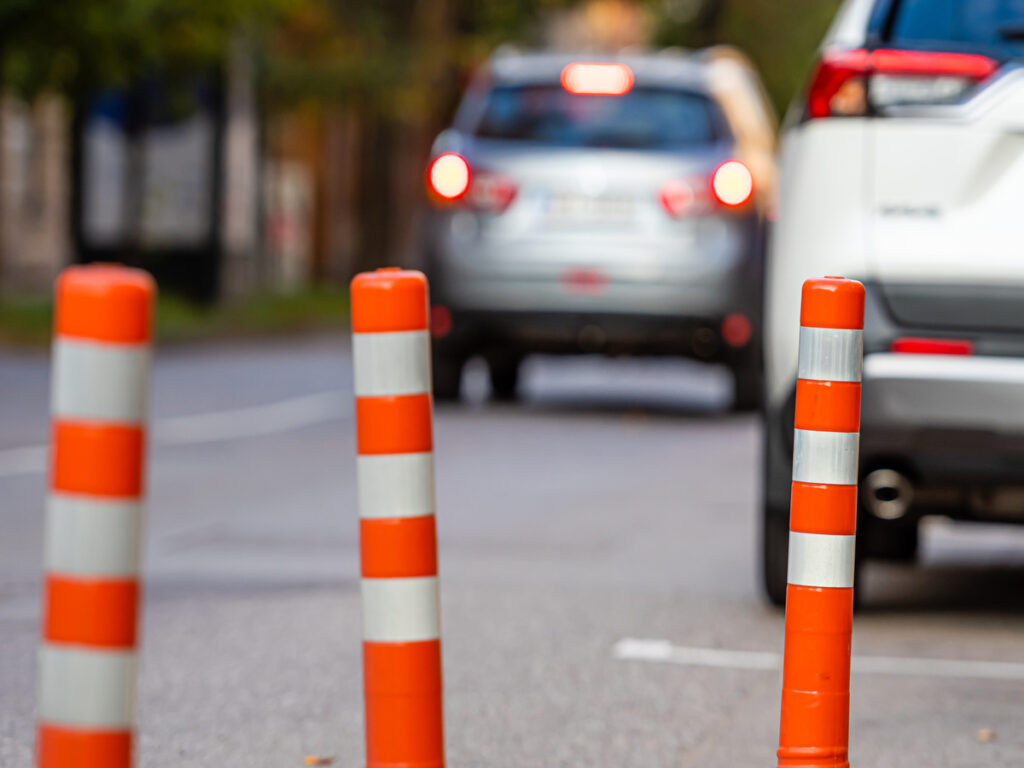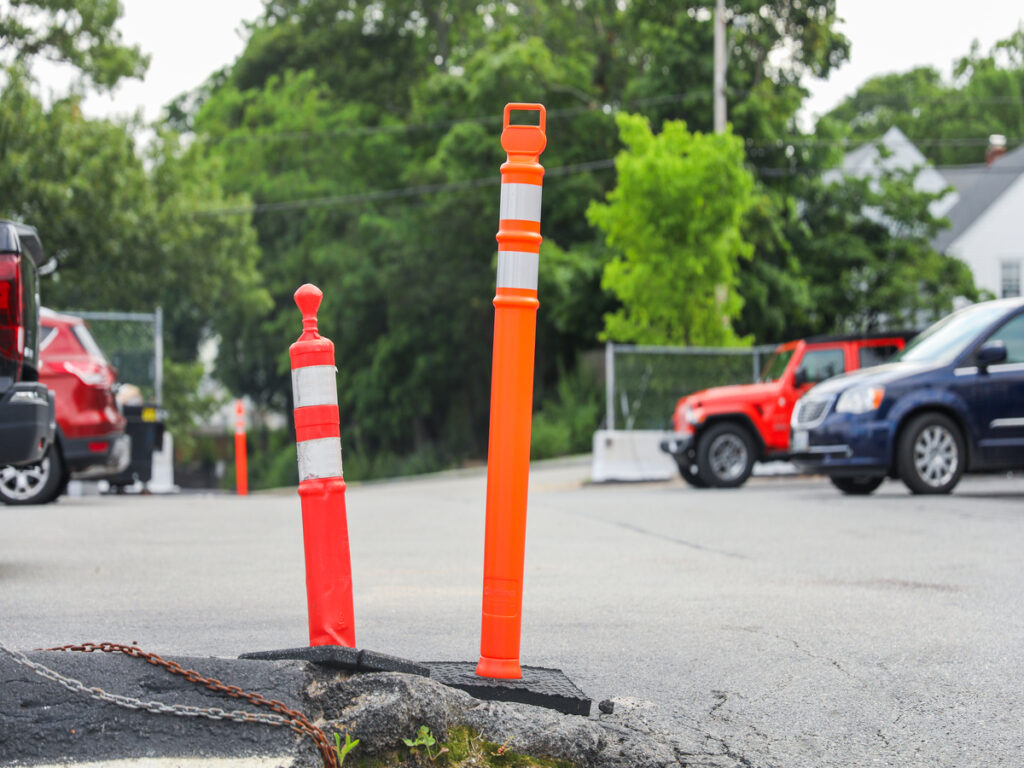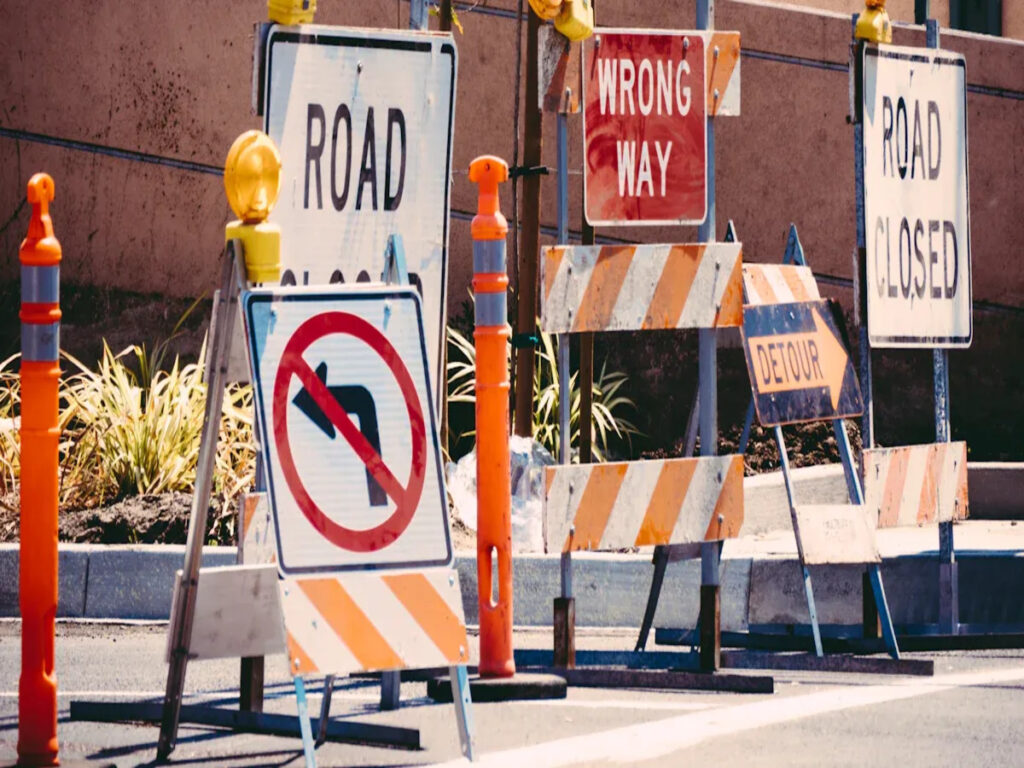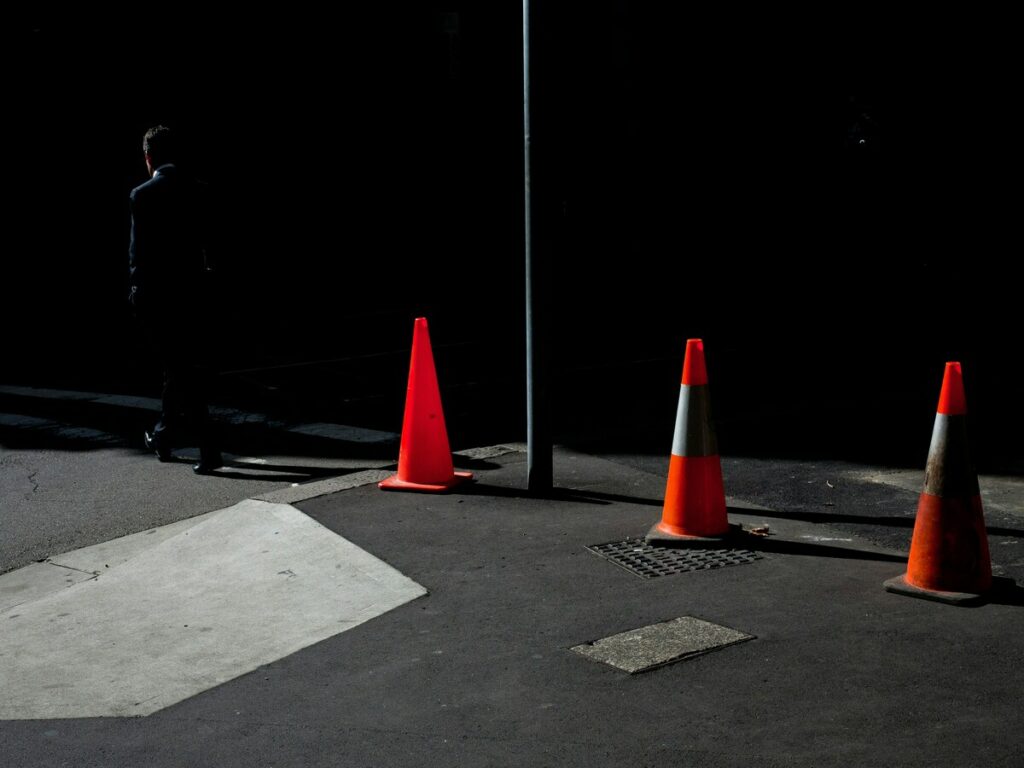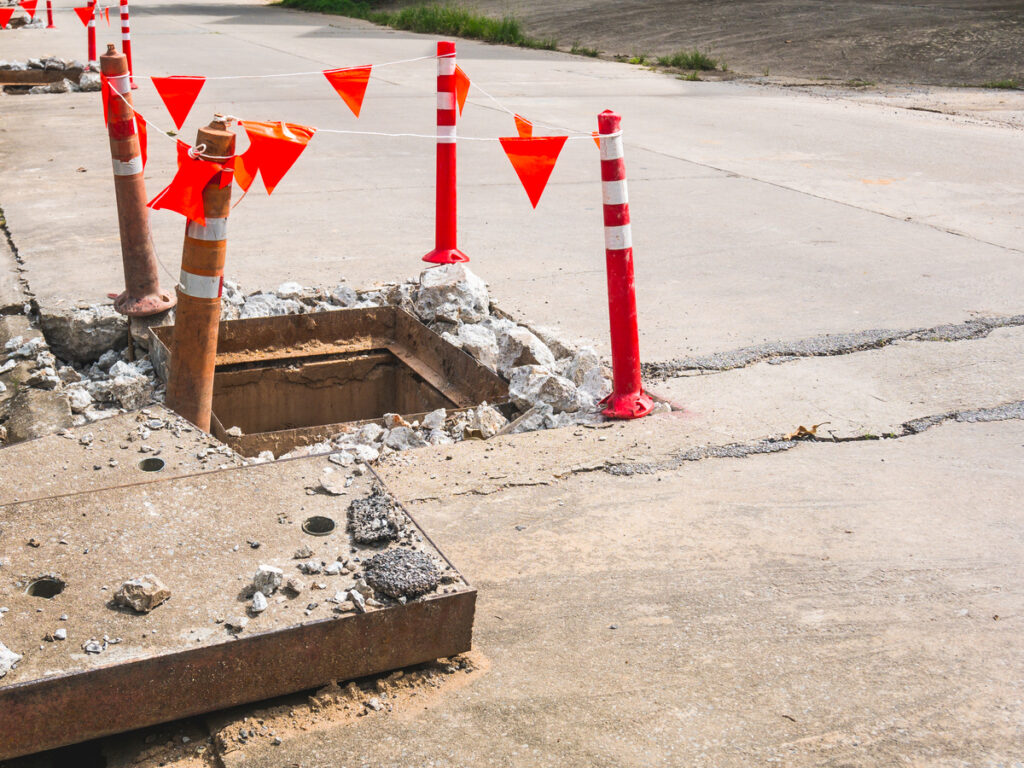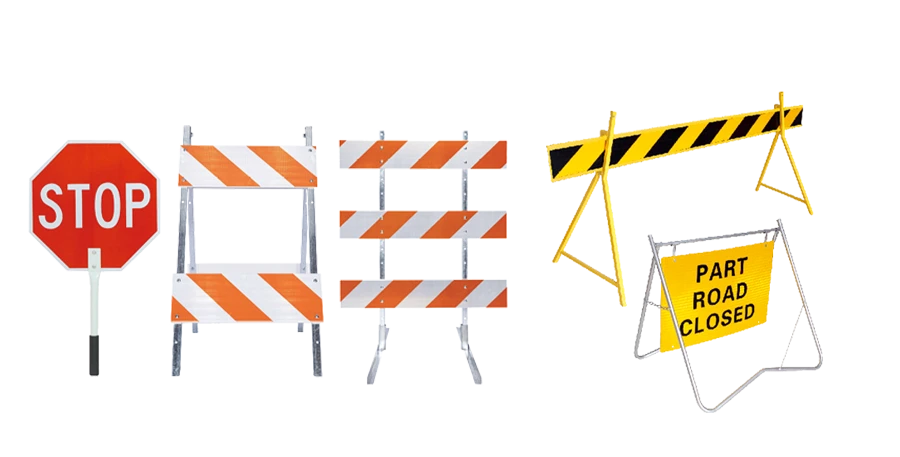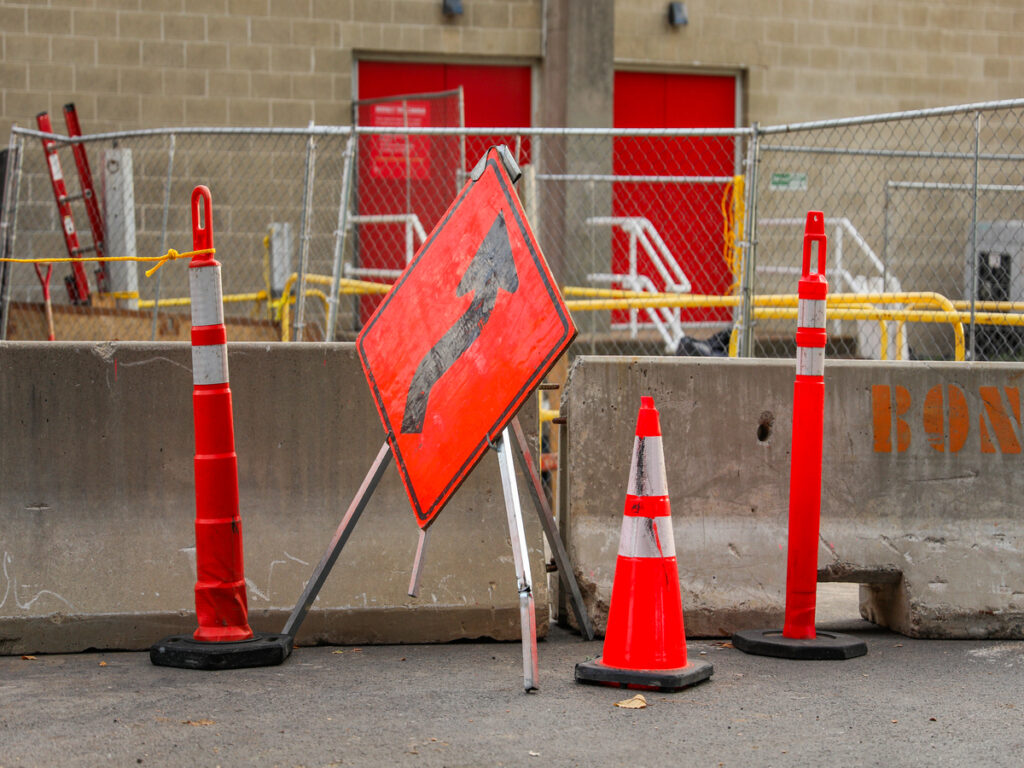
A crash blocks two lanes when it gets dark. Emergency crews get there fast. Time matters a lot. Every minute lost makes things more dangerous. Quick-deploy roadway delineators help crews make safe paths quickly. They help keep roads and people safe. These delineators bend and go back to shape. Emergency vehicles can drive through fast. Public safety agencies use them for quick traffic control. They make incident sites safer.
- 49.5% of agencies had slower responses in 2024 because of traffic.
- 41.7% said congestion was the biggest problem for fast response.
- 37.69% of calls had delays.
How can agencies stop emergency response delays with better tools? Roadway delineators help solve this problem.
En OPTRAFICO, proporcionamos high-quality roadway delineators designed for rapid deployment in emergency situations. Nuestro durable, delineadores flexibles can be easily set up and adjusted, ensuring emergency crews can create safe pathways quickly and efficiently. Whether it’s for roadblock management o redirección de tráfico, OPTRAFICO’s delineators are built to withstand the elements, providing reliable traffic control to keep both responders and the public safe during critical situations. Get the right tools to manage incidents effectively with OPTRAFICO.
Control de llave
- Quick-deploy roadway delineators help emergency crews work fast. They set up safety zones in just a few minutes. This makes response times shorter. It keeps roads open for emergency vehicles.
- These delineators are light and need no tools. Crews can carry and install them easily. This means setup is quick. It helps keep everyone safe during emergencies.
- The delineators use bright, materiales reflectantes. Drivers see road changes faster. Esto reduce la posibilidad de más accidentes..
- Kits with delineators are ready before emergencies happen. Emergency responders can act fast. This helps control traffic better. It keeps the public safer.
- Crews train often and practice with drills. This helps them use delineators well. They respond quickly and stay organized in real emergencies.
The Cost of Setup Time in Emergencies
Deployment Lag and Its Risks
A crash on a busy road causes confusion fast. Crews arrive and need to set up delineadores de tráfico. Every minute they spend setting up makes things more risky. Deployment lag means crews take extra time to place roadway delineators. This happens more in busy areas. Delays can block traffic and make roads less safe. If crews cannot set up reflective barriers quickly, more crashes can happen. Drivers may not notice road changes if delineators take too long to install. Poor visibility and slow setup can cause more crashes. Both crews and drivers can get hurt.
Studies show secondary crashes often happen 37 a 96 minutes after the first crash. Setting up reflective delineators faster can lower these crashes. Quick setup helps traffic move and keeps roads safer. Good temporary traffic control with reflective barriers protects everyone. It keeps emergency workers and the public safe from more crashes.
Secondary Accidents and Delays
Secondary crashes are a big problem in busy areas. Slow setup of delineators makes more crashes likely. Here are some facts:
- Encima 4540 secondary crashes happened from 2010 a 2018.
- 51% of deaths happened when people helped at broken-down cars.
- Cada año, acerca de 71,529 people are in low-visibility emergencies. This leads to 566 muertes y 14,483 lesiones.
- That means about 1.55 deaths and almost 40 injuries every day.
Delineadores reflectantes help lower these numbers. Quick setup of road changes with barriers keeps traffic moving. It lowers crash risks. Crews and the public stay safer when roadway delineators guide drivers. Rápido, clear road changes help stop more crashes. Hacen caminos más seguros para todos.
Why Traditional Traffic Delineators Fall Short
Weight and Bulk Issues
Traditional traffic delineators can make things hard for crews. Many have heavy bases and thick parts. Crews find it tough to lift and carry them. One person cannot move many at once. This slows down work and makes roads less safe. Cada segundo importa en emergencias. Bulky traffic delineators make safe zones slower to set up. Emergency teams must clear roads fast. Heavy traffic delineators make this job harder.
Consejo: Crews should pick traffic delineators that move and place fast.
Assembly Complexity
Many traditional traffic delineators need to be put together first. Crews must connect bases and add reflective panels. A veces, they need tools for this job. This takes time and distracts workers from keeping roads safe. En emergencias, every minute spent building traffic delineators is risky. Simple, tool-free traffic delineators save time and help crews. Crews should guide traffic and protect roads, not build equipment.
- Crews say delays happen with complicated traffic delineators.
- Emergency teams like traffic delineators that are ready to use.
- Quick setup means faster safety for everyone on the road.
Visibility Limitations
Visibility is very important for road safety in emergencies. Many traditional traffic delineators do not reflect light well. Drivers may not see them at night or in bad weather. Poor visibility means drivers miss warnings and crash more. Crews need traffic delineators with good reflective materials. These must stand out in fog or rain. Reflective traffic delineators help guide drivers and keep roads safe.
| Característica | Delineadores tradicionales | Quick-Deploy Delineators |
|---|---|---|
| Peso | Pesado | Ligero |
| Assembly | Complejo | Tool-Free |
| Reflective Quality | Bajo | Alto |
| Road Visibility | Limitado | Excelente |
Crews need traffic delineators that fix these problems. Quick-deploy traffic delineators work better for emergencies. They reflect light well and make roads safer for all.
Rapid-Deploy Roadway Delineators: Features That Matter
Diseño liviano y portátil
Rapid-deploy traffic delineators are made from light materials. Crews can carry many at once and set them up fast. One person can make a safety zone without waiting for help. Mobile Public Health Emergency Operation Centres use portable gear to respond quickly. Fire departments and rescue teams use rapid shelters for command centers and medical spots. These examples show that light and portable gear helps in emergencies. Temporary solutions like rapid-deploy traffic delineators help crews adjust to road changes and keep people safe.
Tool-Free, Fast Deployment
Modern traffic delineators do not need tools or hard assembly. Crews can put them on the road right away. This saves time and lets responders guide traffic and protect the scene. Alguno traffic delineators have bases or stakes that “pop” into place. Crews do not spend time connecting parts or looking for tools. Fast setup means the safety zone is ready in minutes. This speed lowers the chance of more crashes and keeps roads open for emergency vehicles.
Nota: Tool-free traffic delineators help crews work fast and keep roads safe for all.
Reflective Road Delineators for Visibility
High visibility is very important for road safety at night or in bad weather. Reflective road delineators use bright surfaces to catch headlights and warn drivers. These surfaces guide traffic away from danger and mark the safety zone. Research shows reflective road delineators help drivers see changes in low light. The Federal Highway Administration says reflective materials can cut accidents by 40%. A study from 2003 a 2005 showed big drops in accidents, fallecidos, and injuries when crews used reflective road delineators. These results show that reflective surfaces on traffic delineators save lives and stop injuries.
- Reflective road delineators help drivers see in all conditions.
- Reflective surfaces make road changes easy to spot for every driver.
- High visibility reflective road delineators help stop crashes and keep roads safe.
Durable, All-Weather Construction
Rapid-deploy traffic delineators must work in any weather. Crews deal with rain, nieve, calor, and wind during emergencies. Strong construction keeps traffic delineators standing and easy to see. Makers use polyethylene for flexibility and strength. A rubber hinge lets the delineator bend and stand up again after being hit. The polycarbonate base gives stability and keeps it in place. Reflective strips help drivers see the safety zone.
| Característica | Descripción |
|---|---|
| Material | Polyethylene for flexibility and durability |
| Material base | Polycarbonate for stability and strength |
| Absorción de impacto | Bends and stands up, lowering injury and car damage |
| Visibilidad mejorada | Reflective strips for high visibility in low light and bad weather |
Crews need strong, all-weather traffic delineators to keep roads safe in emergencies. Reflective road delineators with tough build and bright surfaces help keep everyone safe. These features make rapid-deploy traffic delineators the best pick for temporary road safety.
Smarter Emergency Response Strategies
Pre-Positioned Kits
Agencies make roads safer by keeping traffic delineators in kits. These kits stay in emergency vehicles or at key spots. El Tennessee Department of Transportation usos “Ready Response Trailers” with traffic delineators and reflective barriers at 15 places. Wisconsin puts portable barriers near freeway ramps for quick road closures. Crews grab these kits and set up reflective traffic delineators fast. This helps cut down on delays. Pre-positioned kits help responders make safe zones and get traffic moving again quickly.
Consejo: Agencies should always have traffic delineators and reflective barriers ready and checked often.
Scenario-Based Deployment
Scenario-based plans help crews use traffic delineators and reflective barriers for different emergencies. Teams practice with drills that feel real. They learn to put traffic delineators on the road under pressure. These drills help crews feel confident and make good choices. Scenario training also helps teams talk and work together better. Agencies make step-by-step plans for each road incident. Crews know how many traffic delineators and reflective barriers to use. This makes traffic control fast and organized. It also keeps roads safer.
- Realistic drills help teams use what they learn.
- Teams spot dangers and use the right number of traffic delineators.
- Scenario plans help agencies use their supplies well and keep roads open.
Training for Speed
Regular training helps crews set up traffic delineators and reflective barriers quickly. Agencies train all new staff on emergency steps. Special lessons help team leaders and communications coordinators. Drills act out real emergencies so everyone practices setting up traffic delineators. Training teaches how to use notification systems and mobile apps for traffic control. Staff learn to do many jobs, so there is backup for important tasks. Lots of practice keeps skills strong and helps keep the public safe.
| Enfoque de entrenamiento | Beneficio |
|---|---|
| Hands-on drills | Crews set up traffic delineators faster |
| Role assignments | Everyone knows their job for road safety |
| Technology use | Quick alerts and better visibility |
Agencies that use rapid-deploy traffic delineators in emergency plans respond faster and keep roads safer for everyone.
Impacto del mundo real: Más rápido, Safer Responses
Five-Minute Safety Corridor Example
A crash stops cars on a busy road. Emergency crews get there fast. They need to make a safe area right away. Crews use rapid-deploy traffic delineators to guide drivers. The team starts putting traffic delineators down in thirty seconds. By three minutes, the safety corridor is set up along the road. It shows drivers where to go and keeps them away from danger. At five minutes, the whole scene is safe. Crews can help people and clear the road.
This timeline shows how quick work helps:
- 0:00 – Crews arrive and take out traffic delineators.
- 0:30 – First traffic delineators mark the crash area.
- 3:00 – The safety corridor gets longer and guides cars.
- 5:00 – The road is safe, and crews can help people.
A look at response times shows the difference:
| Response Time Interval | Mortality Risk (%) |
|---|---|
| Bajo 5 minutos | 0.51 |
| Exceeded 5 minutos | 1.58 |
Crews who set up traffic delineators in less than five minutes lower the risk of death by more than two-thirds. Faster work means safer roads and fewer injuries. The five-minute safety corridor proves that quick setup saves lives.
Improved Outcomes for Responders and Public
Rapid-deploy traffic delineators help emergency crews work faster and safer. Drivers see clear boundaries and stay away from danger. The road stays open for emergency vehicles. Crews spend less time setting up and more time helping people.
Traffic delineators with high visibility help drivers see changes in the road. This stops confusion and prevents more crashes. Crews feel sure using equipment that works in any weather. The public gets fewer delays and safer trips.
Los beneficios clave incluyen:
- Fast setup of traffic delineators keeps roads open.
- Clear visibility lowers crash risks for drivers.
- Strong traffic delineators protect crews from moving cars.
- Organized safety corridors help teams focus on rescue and recovery.
Nota: Agencies using rapid-deploy traffic delineators get better results for crews and the community.
Traffic delineators help in every emergency. They let crews work quickly, protect the road, y mantener a todos a salvo.
Quick-deploy roadway delineators help agencies act fast and keep roads safe. These tools make it easier to see and protect both crews and people. Many cities use rapid-deploy delineators to mark lanes and try new safety ideas. Their strong build and bendy design make them great for quick projects.
- They can lower injury crashes by up to 45%.
- Flexible delineators last longer on busy streets.
- Agencies can change plans fast to meet safety needs.
Download the free checklist or ask for a live demo to see how they work.
Preguntas frecuentes
How do quick-deploy roadway delineators improve emergency response times?
Crews can set up quick-deploy roadway delineators very fast. This helps teams make safety zones in just a few minutes. Quick setup means less waiting and roads stay open for emergency vehicles.
What makes these delineators different from traditional models?
Quick-deploy delineators are made with light materials and tool-free bases. Crews can carry and put them down easily. No assembly is needed, so crews save time during emergencies.
Can these road delineators withstand harsh weather and repeated impacts?
Manufacturers use tough plastics and flexible hinges for rapid-deploy delineators. These features help delineators stand up in rain, nieve, o viento. They bend and go back to shape after being hit by cars.
How do these delineators enhance visibility for drivers?
Bright colors and reflective surfaces make delineators easy to see. Drivers notice road changes, Incluso por la noche o en la niebla. Better visibility helps stop more crashes from happening.
Are quick-deploy delineators suitable for all types of road incidents?
Agencies use these delineators for crashes, cierres de carril, y eventos. Their portable design and strong build work well in many emergencies.

